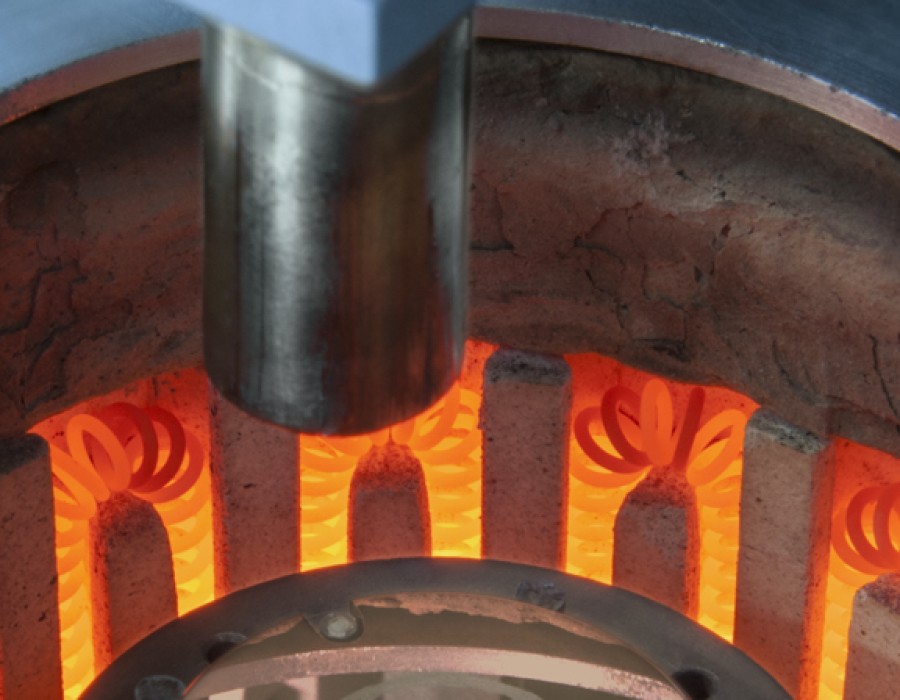Every furnace has a heart, and it is forged into fire. Centered in this high-temperature system is a material that quietly fights some of the most challenging conditions in the manufacturing world, such as furnace refractory. These materials do more than endure extreme heat; they function reliably, keeping the structure intact while fighting thermal stress, corrosion, and physical deterioration.
With increasing demand for effective thermal systems and improved energy management, selecting furnace refractory and high-temperature materials is more than a technicality; it is a critical design choice. Knowing how heat changes these materials and how they affect the furnace reveals the quiet strength behind today’s heating systems.
The Role of Refractoriness in Managing Stress
Furnace refractory acts as a shield and support. It lines the furnace’s interior, absorbing the heat and keeping the steel or outer case away from direct contact. However, it also dissipates and stores thermal stress, so there is less chance of sudden failure. This is especially critical in conditions where the temperature goes up and then down regularly. With each cycle, new stress points are introduced.
An adequately designed refractory structure, with the proper high-temperature materials, withstands these changes without cracking, swelling, or folding. It also serves a vital function of energy efficiency by reducing heat loss with the passage of time, stable performance of the refractory guarantees extended furnace life, and lower maintenance expenses.
The Silent Evolution During Use
People often don't understand how refractory materials in a furnace evolve, not in the sense that they become any less intense, at least not right away, but in how they behave within their surroundings. High temperature materials are exposed to gases, slag, and molten metal, changing their chemical makeup slightly on the surface. Sometimes, this creates a protective glaze. Other times, it results in corrosion. These are slight, ongoing changes.
Realizing this transformation facilitates maintenance planning, wear prediction, and enhancing the performance of future linings. Over time, these surface changes can affect heat transfer, thermal cycling performance, and even material infiltration within the lining. Tracking these micro-level changes enables engineers to maximize operating conditions and refractory life. It’s not only about durability; it’s about adaptation.
Adapting to Different Heat Profiles
No two furnaces are alike. Some demand quick heat-up times; others burn steadily. The heat profile, or rate of heat change over time, directly influences refractory choice. What does well under gradual heat may not withstand abrupt spikes.
So, refractory material that works okay for short-term heat exposure can degrade rapidly in continuous processes. That match-up of material with heat behavior is one of the quiet sciences that contributes to a furnace's long life. Engineers must carefully examine each furnace's thermal cycle to select the appropriate refractory. Variables such as peak temperature, exposure time, and heating and cooling cycles all impact performance. A customized approach guarantees safety as well as cost-effectiveness in the long run.
Maintenance and Monitoring: A Proactive Approach
Even the finest high temperature materials break down over time. Preventive maintenance and regular inspection can prolong furnace refractory life by months or years. Minor surface changes, such as hairline fractures or discoloration, can further signal problems. Identifying and treating these in the early stages avoids major breakdowns. It is not only safer but also reduces expensive shutdowns as well. Technologies such as thermal imaging and acoustic sensors can improve the early detection of trouble spots. Coupling these devices with regular visual inspections forms a total maintenance strategy. With time, this proactive process results in more efficient furnaces and extended refractory life.
Conclusion
A furnace does not just produce heat; it must also withstand it. Behind every effective, long-lasting furnace is a well-selected blend of furnace refractory and high-temperature materials. These quiet guardians absorb heat, stress, and time with incredible strength. Through insight into how heat responds to these materials, and careful maintenance, we release improved performance and a longer lifespan from the equipment that fuels much of the contemporary world. RHI’s skills and premium-grade materials can allow industries to streamline furnace operations for optimal performance and decrease downtime for decades.





Comments